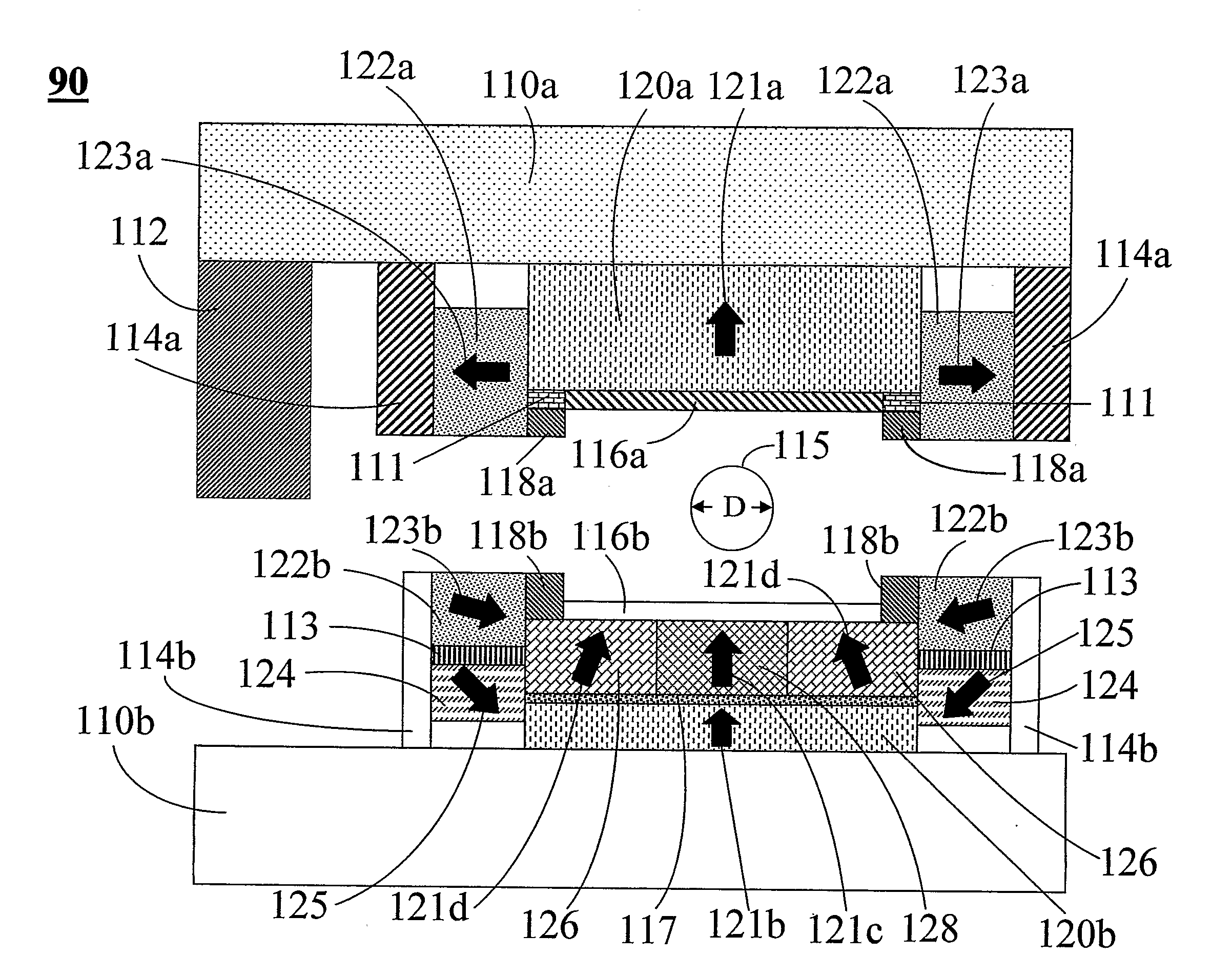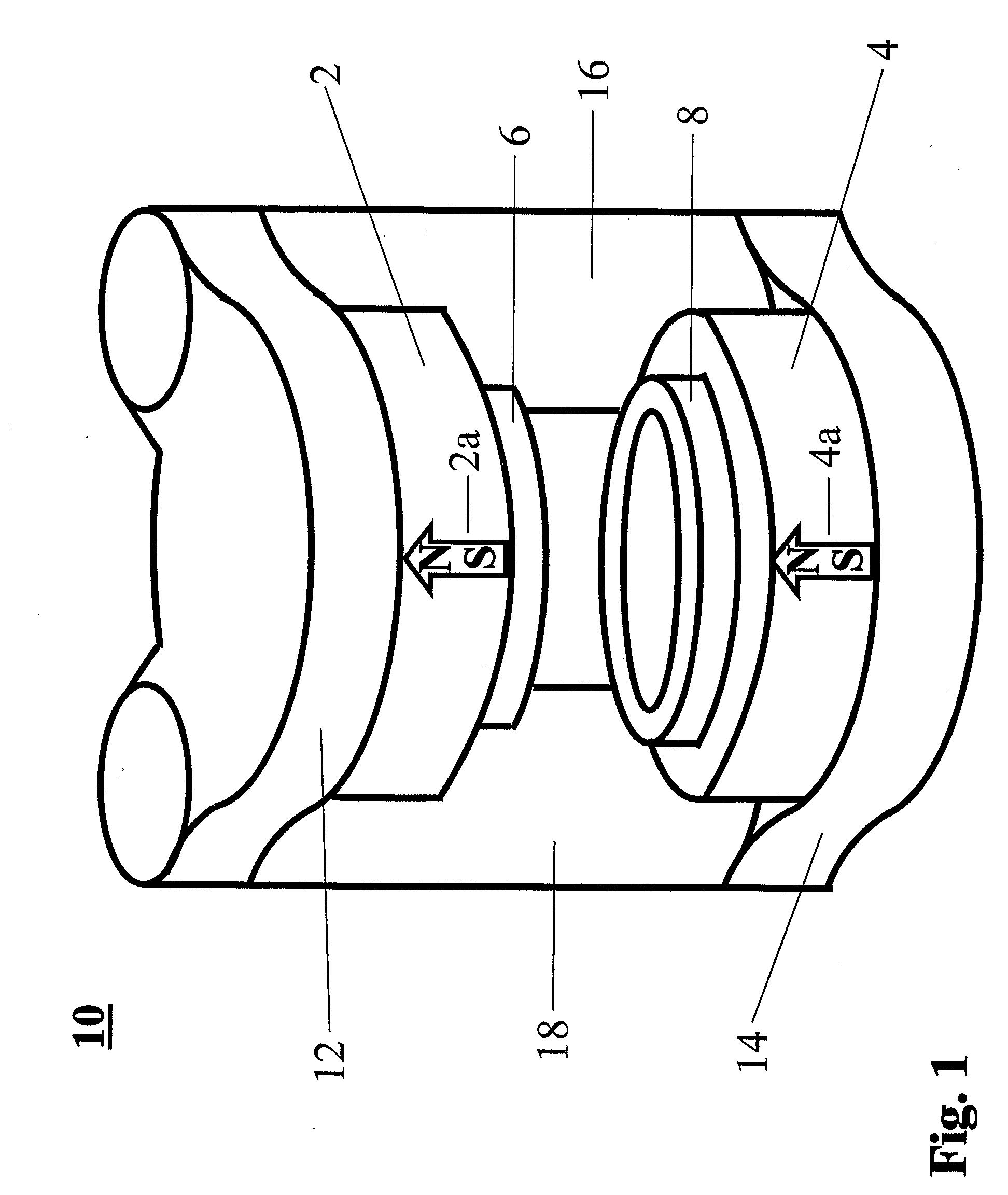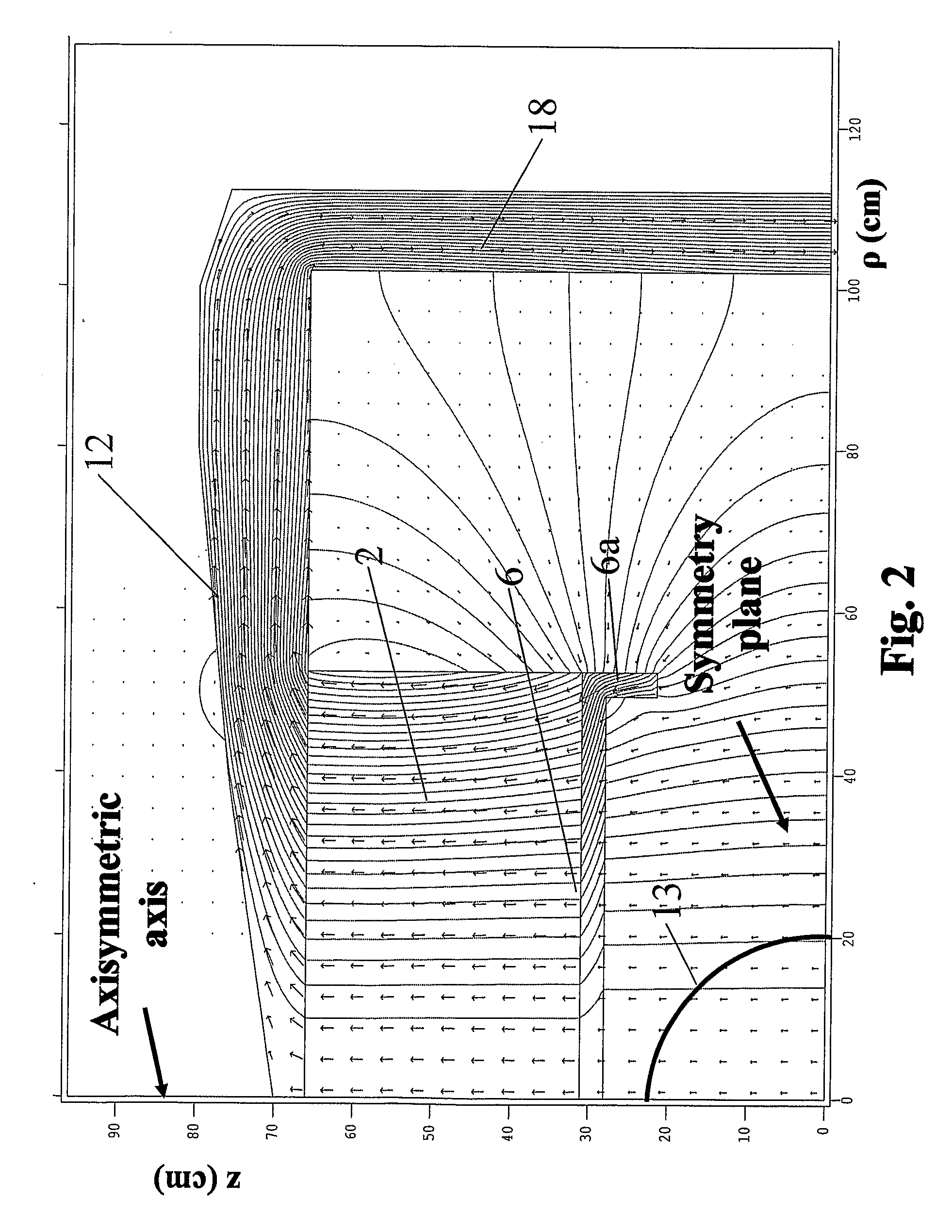Open MRI Magnetic Field Generator
a magnetic field generator and open technology, applied in the field of permanent magnet designs, can solve the problems of high cost, limited, and limited use of most whole-body permanent magnet scanners, and achieve the effects of reducing fringe field generation, efficient yoke and return design, and high efficiency and practical design
- Summary
- Abstract
- Description
- Claims
- Application Information
AI Technical Summary
Benefits of technology
Problems solved by technology
Method used
Image
Examples
case 10
[0085]Case 10 is a check on the effect of just changing the magnetization orientation in the upper portion of the ring magnet 124. The result clearly shows that the central field value is increased by about 30 G without any effect on the homogeneity. Therefore, adjustments of this portion of the ring magnet give fine control over the central field value. Case 11 shows the benefits of changing the edge portion of the L-poles, 111 to a permanent magnet. It adds about 250 G to the central field value and significantly reduces the overall saturation of the L-poles. In contrast changing the Rose shims, 118, to permanent magnets, Case 12, has a similar effect as well and varying the magnetization orientation adjusts saturation of the L-poles and the overall homogeneity.
[0086]In more practical implementations of this magnet system a polygonal shape to the L-magnets and the L-poles is easier in which case the sections have to be at least 8 and preferably 32 or more for a better circumferent...
PUM
 Login to View More
Login to View More Abstract
Description
Claims
Application Information
 Login to View More
Login to View More - R&D
- Intellectual Property
- Life Sciences
- Materials
- Tech Scout
- Unparalleled Data Quality
- Higher Quality Content
- 60% Fewer Hallucinations
Browse by: Latest US Patents, China's latest patents, Technical Efficacy Thesaurus, Application Domain, Technology Topic, Popular Technical Reports.
© 2025 PatSnap. All rights reserved.Legal|Privacy policy|Modern Slavery Act Transparency Statement|Sitemap|About US| Contact US: help@patsnap.com



